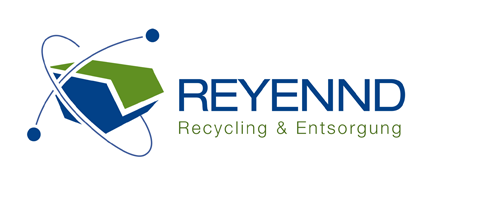When calculating the operating leverage, EBIT is a dependent variable that is determined by the level of sales. Sue uses $500,000 of her cash and borrows $1,000,000 to purchase 120 acres of land having a total cost of $1,500,000. Sue is using financial leverage to own/control $1,500,000 of property with only $500,000 of her own money. Let’s also assume that the interest on Sue’s loan is $50,000 per year and it is paid at the beginning of each year. Buying on margin is the use of borrowed money to purchase securities.
- Simultaneously, one should be conscious of the risks involved in increasing debt financing, including the risk of bankruptcy.
- For example, lenders often set debt-to-income limitations when households apply for mortgage loans.
- On the other side of the challenge to cover a higher fixed cost base, operating leverage affords companies major upside opportunity.
- This team of experts helps Finance Strategists maintain the highest level of accuracy and professionalism possible.
- Everyday folks who take out a mortgage to buy a new home are also flexing their financial leverage.
- A DOL of 1 means that a 1% change in the number of units sold will result in a 1% change in EBIT (operating income).
Leverage is the use of debt to finance an organization’s activities and asset purchases. When debt is the primary form of financing, a business is considered to be highly leveraged. For example, if investors buy $1 million of stock and the business then earns $100,000 of profits, their return on investment will be 10%. Financial leverage ratios measure the amount of capital that is in the form of debt.
Create a free account to unlock this Template
Typically, the higher the D/E ratio, the more aggressive a company has been pursuing growth with debt. This particularly induces greater risk exposure in a higher interest rate regime. Financial leverage relates to Operating Leverage, which uses fixed costs to measure risk, by adding market volatility into the equation. First-order operational financial leverage is described as leverage affects income directly, whereas second-order or combined leverage affects income indirectly through fluctuations in asset values. The operating leverage formula measures the proportion of fixed costs per unit of variable or total cost. Everyday folks who take out a mortgage to buy a new home are also flexing their financial leverage.
Buying on margin generally takes place in a margin account, which is one of the main types of investment account. This includes a home equity loan or line of credit, as well as a cash-out refinance. You might use it to cover home renovations, college costs, debt repayment or other major life expenses. Financial leverage is important as it creates opportunities for investors.
Do you own a business?
The debt-to-equity (D/E) ratio is used to compare what the company has borrowed compared to what it has raised from private investors or shareholders. Financial leverage picks up where operating leverage leaves off, and is produced through the use of borrowed capital which generates fixed financial costs (such as interest expense). Financial leverage is the amplifying power of a percentage change in operating income on the percentage change in net profit due to fixed financial costs. The more fixed costs a company has, the more sales it needs to generate to cover them, and that introduces significant risk into the business. In the event the company can’t generate sufficient revenue and gross margin to offset its fixed costs, it will incur an operating loss.

Financial leverage is beneficial when the interest rate on the debt is less than the return on assets. Otherwise, you’re not going to be able to generate a large enough return on the use of the business assets to offset interest borrowing costs. A company must be careful while analyzing its financial leverage position because high leverage means high debts. Also, giving ownership may prove to be hazardous for the organization and even result in huge loss and business failure.
Operating and Financial Leverage as Business Growth Tools
Financial leverage arises when a firm decides to finance the majority of its assets by taking on debt. Firms do this when they are unable to raise enough capital by issuing shares in the market to meet their business needs. If a firm needs capital, it will seek loans, lines of credit, and other financing options. The use of financial leverage in bankrolling a firm’s operations can improve the returns to shareholders without diluting the firm’s ownership through equity financing. Too much financial leverage, however, can lead to the risk of default and bankruptcy.

However, the technique also involves the high risk of not being able to pay back a large loan. Leverage is nothing more or less than using borrowed money to invest. Leverage can be used to help finance anything from a home purchase to stock market speculation. Businesses widely use leverage to fund their growth, families apply leverage—in the form of mortgage debt—to purchase homes, and financial professionals use leverage to boost their investing strategies. Leverage in personal investing involves using borrowed funds to buy into an investment. Lots of companies, especially startups, continually seek leverage in the form of investor capital they can use to grow their businesses and meet important milestones.
Regardless, you’ll still be responsible for paying back whatever you borrow. Buying an investment property is a prime example of financial leverage. That may be a rental property that you maintain and lease out to tenants, which can create a steady flow of passive https://www.bookstime.com/ income each month. In this case, the goal is to turn a profit after buying a property, sprucing it up and putting it back on the market. Investors must be aware of their financial position and the risks they inherit when entering into a leveraged position.
- Company A and B wish to acquire an asset with an original cost of $1,000,000.
- Investors get nervous about too much debt financing, as it drives up the company’s default risk.
- Once figured, multiply the total financial leverage by the total asset turnover and the profit margin to produce the return on equity.
- While borrowing money may allow for growth by, for example, allowing entities to purchase assets, there are risks involved.
- A company was formed with a $5 million investment from investors, where the equity in the company is $5 million, which is the money the company can use to operate.
There is a suite of financial ratios referred to as leverage ratios that analyze the level of indebtedness a company experiences against various assets. The two most common financial leverage ratios are debt-to-equity (total debt/total equity) and debt-to-assets (total debt/total assets). If a company’s variable costs are higher than its fixed costs, the company is using less operating leverage. How a business makes sales is also a factor in how much leverage it employs.
Financial leverage is also useful for furthering short-term business growth objectives, such as engaging in acquisitions and to raise capital quickly and effectively. There are also benefits in terms of taxation, as interest costs are a form of deductible expense in calculating tax liability. When a company uses debt financing, its financial leverage increases. More capital is available to boost returns, at the cost of interest payments, which affect net earnings.
A high interest coverage ratio indicates that the company can easily generate sufficient profit to pay interest on its outstanding debt. Simultaneously, one should be conscious of the risks involved in increasing debt financing, including the risk of bankruptcy. Where earnings are either equal to fixed financial charge or unfavorable, debt financing should not be encouraged. If the financial leverage is positive, the finance manager can try to increase the debt to enhance benefits to shareholders. To conclude, financial leverage emerges as a result of fixed financial cost (interest on debentures and bonds + preference dividend).
What is the approximate value of your cash savings and other investments?
An example is an automotive company like Ford, which needs a huge amount of equipment to manufacture and service its products. When the economy slows down and fewer people are buying new cars, Ford still has to pay its fixed costs, such as overhead on factories and depreciation on equipment that sits in the warehouse. This may happen exactly at a time when there is little market liquidity, i.e. a paucity of buyers, and sales by others are depressing prices.
- Baker is using financial leverage to generate a profit of $150,000 on a cash investment of $100,000, which is a 150% return on its investment.
- Professional investors and traders take on higher levels of leverage to more efficiently use the money they have to invest.
- However, this doesn’t necessarily mean a company is highly leveraged.
- Both investors and companies employ leverage (borrowed capital) when attempting to generate greater returns on their assets.
- When calculating the operating leverage, EBIT is a dependent variable that is determined by the level of sales.

